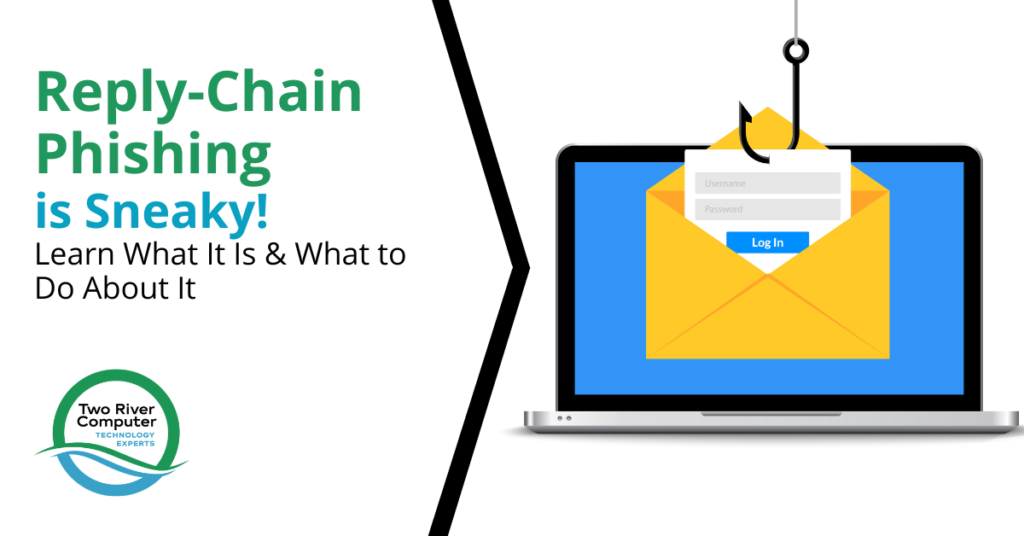
A scary method that cybercriminals are relying upon to steal and hijack your data is a reply-chain phishing attack. It is an innovative way of obtaining sensitive information from your company and manipulating it for their gains.
If you are wondering how this is possible, think about those strange-looking links you get on your emails. Sounds familiar? That’s an approach hackers use to hack your email and steal vital details.
Have you ever been in a long email conversation where everyone has to reply to ALL?
Now, that’s a typical email reply chain. It is highly famous with cybercriminals as they can carry out sneaky attacks on your email and make it very difficult for anyone to notice.
Reply-chain phishing attacks are one of the easiest ways you can be defrauded because of how familiar the email address looks to you. Scammers leverage the trust shared between the email participants to lure the victims into opening malicious content.
Let’s discuss reply-chain phishing attacks and how you defend against them.
How Do Cybercriminals Access Email Accounts?
There are three ways in which cybercriminals can gain access to your email account from any device. These include:
- Compromised email accounts
- Credential dumping
- Password spraying
How Sneaky Is Reply-Chain Phishing?
On a scale of 1-10, reply-chain phishing occupies the maximum point. Yes, it is very sneaky! It is so because hackers use a recipient’s email address to carry out this wicked deed.
They rely on the use of an approach known as Business Email Compromise (BEC). It confers them the power to access the entire mailbox of the unsuspecting individual. Unfortunately, when the compromised individual partakes in any email conversation, the scammer responds and manipulates it by sending a malicious attachment.
In 2020, business email compromise resulted in over $1.8 billion in losses to U.S. businesses, according to the FBI.
Undoubtedly, it is easy to believe that anyone participating in the conversation is legitimate. So, you may let your guard down.
Moreover, the email address is genuine. The bad news is that these hackers take advantage of the trust between the participants and defraud the organization.
Why Do Reply-Chain Phishing Attacks Work Well?
The reply-chain phishing attack works well because of the credibility of the mail.
In targeted spear phishing, there is awareness training to educate people on how to apply safe practices such as not opening any link or attachment and reporting unfamiliar email messages. All these practices help to reduce risk.
For the reply chain attacks, such training is absent because it is hard to detect the warning flags. This is why even the most careful employee can fall victim to this attack.
How Can You Prevent A Reply-Chain Phishing Attack?
Reply-chain phishing attacks are always hard to detect because of the trust that has been established between the email participants. However, you can take numerous steps to protect yourself from these attacks.
Secure your email accounts: The first step you should take is to secure your email accounts. You can achieve this by using two-factor or multi-factor authentication. Similarly, you can also use a password with at least 16 characters.
You can also secure your account by checking your email client settings. This way, you will discover if your emails are redirected without your consent.
Avoid the use of Office macros: If you can, prohibit the use of office macros. Scammers can compromise your device by sending malicious attachments of a familiar Microsoft Word or Excel document, but the macros these can hold can infect your system when you open them.
Inform your employees: Your employees must be aware of reply-chain phishing attacks. It would help if you redirected them to articles like this. This will empower them with the appropriate information on exercising caution even when conversing with colleagues using emails.
Enlightening them about cybercriminals using emails to operate will give them a better understanding of applying caution before opening any suspicious attachments on their emails.
Protect endpoints with an EDR solution: You should protect all endpoints with a trusted EDR (endpoint detection and response) solution. This will prevent the possibility of any malicious code hidden in an email attachment from causing damage.
How Can You Stay Protected?
Fraudsters make use of reply chain phishing attacks to execute their malicious intent. But, you can defeat these attacks before they occur and cause irreparable damage to your organization.
A good way of doing this is by exerting control over the different parts of your cyber environment. These include securing your devices, instilling the proper knowledge into your employees, and seeking proactive support from an expert.
You don’t have to be a victim if you act now. Contact us at 732-747-0020 or reach out online.


